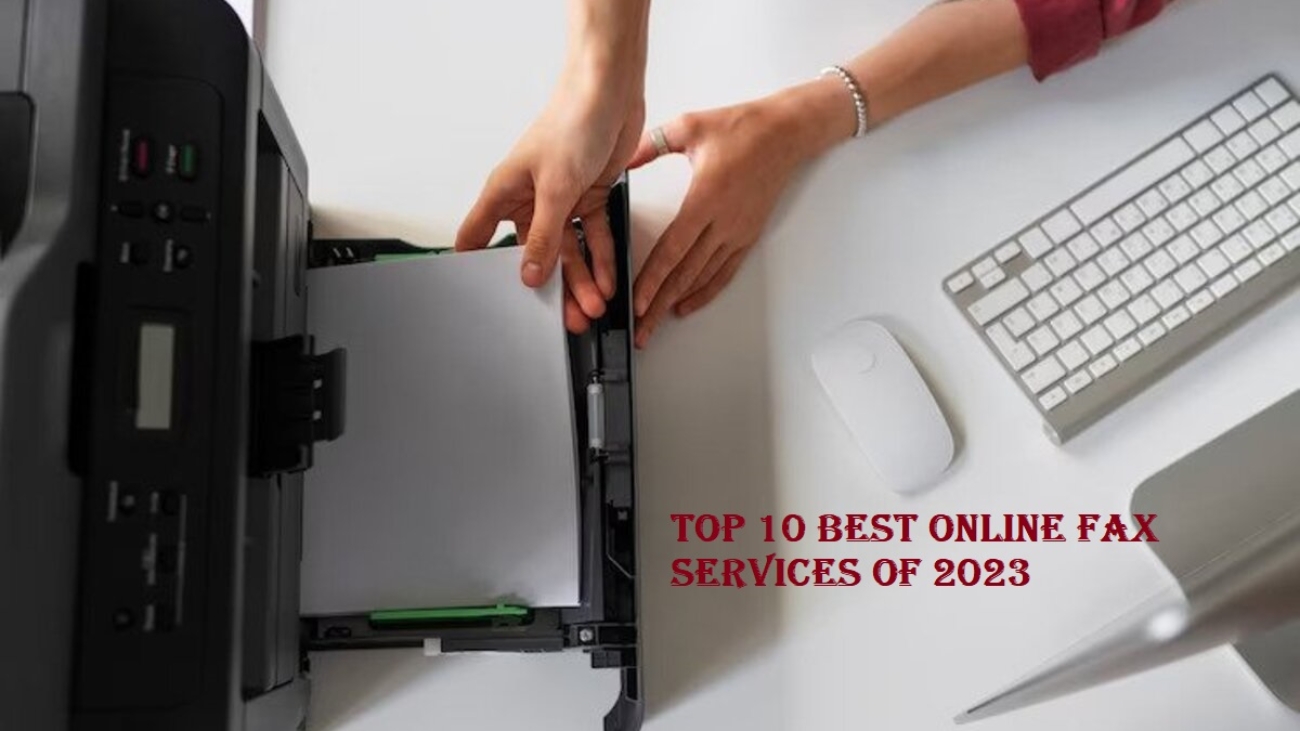India is home to many famous brands that are recognized worldwide. These brands have made a name for themselves in various industries and have become household names in India and beyond. Some of the most well-known Made in India brands include:
1. Tata Group
Tata Group is one of India’s largest and most respected business conglomerates, with a history spanning over 150 years. It has interests in a wide range of industries, including steel, automobiles, technology, and more. Some of the famous brands that are part of Tata Group include:
- Tata Steel – A leading steel manufacturer in India and the world.
- Tata Motors – A leading automobile manufacturer in India, known for the Tata Nano and Tata Indica models.
- Tata Consultancy Services (TCS) – A multinational IT consulting and services company, one of the largest employers in the Indian IT industry.
- Titan – A watch and jewelry brand that offers a wide range of products, including watches, jewelry, eyewear, and more.
- Tata Power – A leading power generation and distribution company in India.
- Tata Tea – One of the largest tea producers in India, known for its popular brands like Tata Tea and Tetley.
- Tata Communications – A telecommunications company that provides a range of services, including internet, voice, and data to customers around the world.
These brands are not only popular in India but have a significant global presence as well.
2. Infosys
Infosys is a multinational IT consulting and services company headquartered in Bangalore, India. It was founded in 1981 by Narayana Murthy and his colleagues and has since grown to become one of India’s most well-known brands. Infosys provides a range of services, including software development, maintenance, and engineering services, as well as consulting and digital transformation services to clients around the world. Some of the famous brands that are part of Infosys include:
- Finacle – A banking software solution that is used by banks around the world.
- EdgeVerve Systems – A subsidiary of Infosys that offers a range of products and solutions, including robotic process automation (RPA) software and more.
- Skava – A digital commerce platform that helps retailers create engaging and personalized shopping experiences for their customers.
- Panaya – A cloud-based enterprise software testing platform that helps businesses streamline their software testing processes.
Infosys has won numerous awards and recognitions for its innovation, corporate governance, and social responsibility initiatives. It has a global presence and serves clients in over 50 countries around the world.
3. Mahindra Group
Mahindra Group is a conglomerate with interests in various industries, including automobiles, aerospace, hospitality, and more. It was founded in 1945 and is headquartered in Mumbai, India. Some of the famous brands that are part of Mahindra Group include:
- Mahindra & Mahindra – A leading automobile manufacturer in India, known for its SUVs, tractors, and commercial vehicles.
- Club Mahindra – A popular timeshare vacation brand in India, offering resorts and experiences across the country.
- Mahindra Aerospace – A subsidiary of Mahindra Group that designs and manufactures aircraft and aerospace components.
- Mahindra Holidays & Resorts – A subsidiary of Mahindra Group that operates holiday resorts in India and abroad.
- Mahindra Finance – A financial services company that provides loans for various purposes, including vehicle purchases and home loans.
Mahindra Group is known for its focus on sustainability and social responsibility. It has won numerous awards and recognitions for its innovation, corporate governance, and sustainability initiatives. It has a global presence and serves customers in over 100 countries around the world.
4. Amul
Amul is a dairy cooperative that is based in the state of Gujarat, India. It was founded in 1946 and is known for its wide range of milk products, including milk, butter, cheese, ice cream, and more. Some of the famous brands that are part of Amul include:
- Amul Butter – A popular brand of butter in India and abroad, known for its catchy advertising campaigns.
- Amul Milk – A brand of milk that is known for its quality and purity.
- Amul Cheese – A range of cheese products that includes cheddar, mozzarella, and processed cheese.
- Amul Ice Cream – A range of ice cream products that includes traditional flavors as well as innovative ones like Chai and Kulfi.
Amul is owned by a cooperative of milk producers and has become one of India’s most well-known brands. It has won numerous awards and recognitions for its quality and innovation. Amul’s advertising campaigns, which often feature a cartoonish mascot called the Amul girl, are also well-known and have become an iconic part of Indian popular culture.
5.Bajaj Auto
Bajaj Auto is a leading motorcycle and scooter manufacturer in India, headquartered in Pune. It was founded in 1945 and has since grown to become one of India’s most well-known brands. Some of the famous brands that are part of Bajaj Auto include:
- Bajaj Pulsar – A range of sporty motorcycles that are popular among young riders in India and abroad.
- Bajaj Discover – A range of commuter motorcycles that offer a balance of performance and efficiency.
- Bajaj Platina – A range of entry-level commuter motorcycles that are known for their fuel efficiency.
- Bajaj Chetak – An electric scooter that was reintroduced in 2020, after a gap of over a decade.
Bajaj Auto is known for its focus on innovation and technology. It has a partnership with Austrian motorcycle manufacturer KTM, and together they have developed a range of high-performance motorcycles that are sold under the KTM brand. Bajaj Auto also has a presence in international markets and exports its motorcycles and three-wheelers to over 70 countries around the world.
6. Titan:
Titan Company Limited is a leading consumer goods company in India, headquartered in Bangalore. It was founded in 1984 and has since grown to become one of India’s most well-known brands. Some of the famous brands that are part of Titan include:
- Titan Watches – A range of watches that includes both analog and digital watches for men and women.
- Fastrack – A youth-oriented brand that offers a range of watches, sunglasses, bags, and more.
- Tanishq – A popular jewelry brand that offers a range of gold, diamond, and platinum jewelry.
- Skinn – A range of fragrances for men and women.
Titan is known for its focus on design and innovation. It has won numerous awards and recognitions for its products and services, and has a strong presence in both Indian and international markets. Titan also has a social responsibility initiative called “Titan Company’s BeMore Movement”, which focuses on promoting diversity and inclusion, empowering women, and reducing its environmental impact.
7.Himalaya Herbal Healthcare
Himalaya Herbal Healthcare is a leading herbal healthcare company in India, founded in 1930. It offers a range of Ayurvedic and herbal products that promote wellness and healthy living. Some of the famous brands that are part of Himalaya include:
- Himalaya Herbals – A range of personal care products that includes face washes, soaps, shampoos, and more.
- Liv.52 – A liver support supplement that is one of the most widely-sold herbal products in the world.
- Himalaya Wellness – A range of health supplements that includes products for joint health, immunity, digestion, and more.
- Himalaya BabyCare – A range of baby products that includes diapers, wipes, creams, and more.
Himalaya is known for its focus on natural and herbal ingredients, and its products are widely trusted for their quality and effectiveness. It has won numerous awards and recognitions for its products and services, and has a strong presence in both Indian and international markets. Himalaya also has a social responsibility initiative called “The Himalaya Drug Company’s Impact” which focuses on promoting education, healthcare, and sustainable living in the communities it serves.
8.Godrej Group
Godrej Group is a leading conglomerate in India, founded in 1897. It has a diverse range of businesses, including consumer goods, real estate, appliances, agriculture, & more. Some of the famous brands that are part of Godrej include:
- Godrej Consumer Products – A range of personal care and home care products that includes soaps, shampoos, insecticides, and more.
- Godrej Interio – A leading furniture brand that offers a range of products for homes and offices.
- Godrej Properties – A real estate company that develops and sells residential and commercial properties across India.
- Godrej Agrovet – A leading animal feed and agribusiness company that operates across India and international markets.
Godrej is known for its focus on innovation and sustainability. It has won numerous awards and recognitions for its products and services, and has a strong presence in both Indian and international markets. Godrej also has a social responsibility initiative called “Good and Green”, which focuses on promoting sustainability and community development.
9.Kingfisher
Kingfisher is a popular Indian beer brand, owned by United Breweries Group (UB Group). It was launched in 1978 and has since become one of India’s most well-known beer brands. Some of the popular variants of Kingfisher beer include:
- Kingfisher Premium – A popular lager beer that is known for its smooth taste and aroma.
- Kingfisher Ultra – A premium lager beer that is brewed with imported malts and hops for a richer taste.
- Kingfisher Strong – A strong beer variant that has a higher alcohol content than regular lagers.
Kingfisher is known for its association with sports and entertainment, and has sponsored various events and teams over the years. It has also expanded its product range to include non-alcoholic beverages such as packaged drinking water and energy drinks. Kingfisher is widely available across India and is exported to several international markets as well.
10.Haldiram’s
Haldiram’s is a popular Indian food and snack brand, founded in 1937. It offers a range of traditional Indian sweets, snacks, and meals that are loved by people across India and abroad. Some of the popular products that are part of Haldiram’s include:
- Sweets – A range of traditional Indian sweets such as rasgulla, gulab jamun, and more.
- Namkeens – A range of savory snacks that includes aloo bhujia, dalmoth, and more.
- Ready-to-eat meals – A range of pre-cooked meals that include biryanis, curries, and more.
Haldiram’s is known for its focus on quality and taste. Its products are made using traditional recipes and ingredients, and are widely trusted for their authentic flavors. Haldiram’s has a strong presence across India, with numerous outlets and stores across the country. It has also expanded its operations to international markets such as the United States, Canada, and Singapore.
11. Royal Enfield
Royal Enfield is a popular Indian motorcycle brand, founded in 1901. It is known for its iconic motorcycles that have a classic design and a strong following among biking enthusiasts. Some of the popular models of Royal Enfield motorcycles include:
- Bullet – A classic model that has been in production since 1932 and is known for its retro design and thumping engine sound.
- Classic – A modern variant of the Bullet that combines classic design with modern features such as fuel injection and disc brakes.
- Himalayan – An adventure bike that is designed for off-road and touring purposes.
Royal Enfield is known for its focus on quality and durability. Its motorcycles are handcrafted and undergo rigorous testing to ensure reliability and performance. Royal Enfield has a strong following not just in India but also in international markets, and has a presence in over 50 countries. The company also has a strong community of riders, with events and activities organized for enthusiasts across the globe.
12. Wipro
Wipro is a leading Indian multinational company, founded in 1945. It has a diverse range of businesses, including information technology, consumer goods, and healthcare. Some of the famous brands that are part of Wipro include:
- Wipro Technologies – An information technology company that provides a range of services such as software development, digital transformation, and more.
- Wipro Consumer Care and Lighting – A consumer goods company that offers a range of products such as soaps, toiletries, lighting solutions, and more.
- Wipro GE Healthcare – A healthcare company that offers medical equipment and services for diagnosis, treatment, and monitoring of patients.
Wipro is known for its focus on innovation and technology. It has won numerous awards and recognitions for its products and services, and has a strong presence in both Indian and international markets. Wipro has also been recognized for its commitment to sustainability and social responsibility, with initiatives focused on environmental conservation, education, and healthcare.
13.Reliance Industries
Reliance Industries Limited (RIL) is a leading Indian multinational conglomerate company, founded in 1960. It has a diverse range of businesses, including petrochemicals, refining, oil and gas exploration, retail, and telecommunications. Some of the famous brands that are part of Reliance Industries include:
- Jio – A digital services company that offers mobile network services, broadband, and digital content.
- Reliance Retail – A retail company that offers a range of products such as groceries, electronics, and apparel through its network of stores and online platforms.
- Reliance Petroleum – A refining and marketing company that offers a range of petroleum products such as gasoline, diesel, and aviation fuel.
Reliance Industries is known for its focus on innovation and technology. Its digital services arm, Jio, has disrupted the telecom industry in India with its affordable pricing and high-speed data services. Reliance Retail has also emerged as a major player in the Indian retail industry, with a strong network of stores and a growing presence in the e-commerce space. Reliance Industries has a strong presence in both Indian and international markets and is among the largest companies in India in terms of market capitalization.
14 .Indian Oil Corporation Limited
Indian Oil Corporation Limited (IOCL) is a leading Indian state-owned oil and gas company, founded in 1964. It is one of the largest companies in India and has a diverse range of businesses, including refining, pipeline transportation, marketing of petroleum products, and exploration and production of crude oil and gas. Some of the famous brands that are part of Indian Oil Corporation include:
- Indane – A Liquefied Petroleum Gas (LPG) brand that offers domestic and commercial cooking gas to customers across India.
- SERVO – A lubricant brand that offers a range of automotive and industrial lubricants for different applications.
- XTRAPOWER – A premium petrol brand that offers high-performance fuel for cars and two-wheelers.
Indian Oil Corporation is known for its focus on innovation and sustainability. It has won numerous awards and recognitions for its products, services, and initiatives focused on environmental conservation, social responsibility, and energy efficiency. Indian Oil Corporation has a strong presence in both Indian and international markets, and has a wide network of refineries, pipelines, and marketing infrastructure across the country.
15. Parle Agro
Parle Agro is an Indian food and beverage company founded in 1984. It produces a range of popular Indian soft drink brands, including Frooti, Appy, Appy Fizz, and Bailley. Frooti, a mango-flavored drink, is one of the most popular soft drinks in India and is available in many countries worldwide.
Parle Agro has a strong distribution network and has expanded its product range to include fruit juices, packaged drinking water, and snacks. The company is known for its innovative marketing campaigns and has won several awards for its branding and advertising strategies.
16. Zomato
Zomato is a leading Indian food delivery and restaurant discovery platform founded by Deepinder Goyal & Pankaj Chaddah in 2008 . It offers an online platform and a mobile app that allows users to search for and discover restaurants, read reviews and ratings, and order food online for home delivery or pickup. Zomato is present in more than 500 cities across 24 countries, making it one of the largest food-tech companies in the world.
The company has expanded its services to include table reservations, cloud kitchens, and online events. Zomato is known for its user-friendly interface, accurate restaurant recommendations, and fast delivery services, and has won numerous awards for its technology and innovation.
17.SpiceJet
SpiceJet is a low-cost airline based in India that was founded in 2005. It operates a fleet of modern aircraft, including Boeing and Bombardier planes, and offers domestic and international flights to more than 60 destinations. SpiceJet is known for its affordable fares and has been credited with making air travel more accessible to a wider section of the Indian population.
In addition to its regular services, SpiceJet also operates cargo and charter flights. The company has won several awards for its services, including the Best Low-Cost Airline in India award at the Skytrax World Airline Awards.
18.Paytm
Paytm is a leading Indian digital wallet and e-commerce company. It was founded in 2010 by Vijay Shekhar Sharma under One97 Communications.. It offers a range of services, including mobile recharges, bill payments, online shopping, and peer-to-peer payments. Paytm has a user-friendly interface and is widely used in India for its convenience and ease of use.
The company has expanded its services to include Paytm Payments Bank, which offers savings and current accounts with zero fees, and Paytm Money, which is a mutual fund investment platform. Paytm has also entered the insurance and wealth management sectors with the launch of Paytm Insurance and Paytm Wealth. The company has won several awards for its technology and innovation, and has become one of the most valuable start-ups in India.
19. Dabur
Dabur is an Indian healthcare and consumer goods company. Dabur was founded in Kolkata by Dr. S. K. Burman in 1884.. It produces a range of Ayurvedic healthcare products, including medicines, dietary supplements, and personal care items such as hair oils, shampoos, and skin creams. Dabur has a strong presence in India and is known for its quality and effectiveness of its products.
The company has also expanded its product range to include food items such as honey, juices, and spices. Dabur has won several awards for its CSR initiatives and sustainable practices, and is considered one of the most trusted and respected brands in India.
20.Café Coffee Day
Café Coffee Day is a popular Indian coffeehouse chain. Veerappa Gangaiah Siddhartha Hegde (1958/1959 – 29 July 2019) was an Indian businessman from Karnataka. He was the founder of the cafe chain Café Coffee Day in 1996. It operates over 1,600 cafes across India, making it one of the largest coffee chains in the country. Café Coffee Day offers a range of beverages, including coffee, tea, and smoothies, as well as snacks and sandwiches.
The chain is known for its relaxed atmosphere, free Wi-Fi, and friendly service, and has become a popular hangout spot for young people in India. In addition to its cafes, Café Coffee Day also offers a coffee subscription service and sells its own range of coffee blends and merchandise. The company has won several awards for its innovative products and services, and is considered one of the most iconic brands in India’s coffee culture.
Final Word:
India has a rich and diverse culture, and this is reflected in the country’s famous brands. From traditional Ayurvedic healthcare products to modern digital wallets and e-commerce platforms, India’s brands cover a wide range of industries and sectors. These brands have become household names in India and have also gained recognition and popularity on the global stage. They represent the country’s entrepreneurial spirit, innovation, and creativity, and have contributed significantly to India’s economic growth and development. As India continues to grow and evolve, its brands will undoubtedly play an important role in shaping the country’s future.










